There are well over 600 bird species to tick off the watching list in Cambodia. Some are as much of a common sight as a crashed Prius or Ganzberg beer sign, while others are as rare as kouprey scat or a room temperature pint of Old Speckled Hen.
Keeping in line with the ‘vaguely educational post quota’, set down in the CNE charter, our 2500r store ornithologist Tommy Twitchett was given the task of compiling a list of avian examples. After pleading that he had neither binoculars nor camouflage hat, TT instead turned to the internet and saw a list of hundreds of tweety-birds.
Overwhelmed at the huge numbers involved, he simply scanned the list and chose 12 with what he thought were the strangest/puerile names and added a bit of background information. To prove he was just reaching beyond bare minimal effort, links to each bird’s call were added as extras.
It’s no Nat-Geo, will win no prizes, and we will not dare to insult the greatest Dave ever by making any reference to that nonagenarian national treasure. Hopefully it is interesting enough to pass muster and waste a few minutes of your precious time. – Ed
The Birdy Dozen
1. Blyth’s frogmouth (Batrachostomus affinis) is in the family Podargidae. It is found across Southeast Asia. Its natural habitat is subtropical or tropical moist lowland forest. Named for their large flattened hooked bill and huge frog-like gape-which they use to capture their main diet of insects. Their flight is weak and they often rest horizontally on branches during the day, camouflaged by their plumage. Up to three white eggs are laid in the fork of a branch, and are incubated by the female at night and the male in the day.
Named after British zoologist Edward Blyth, who worked for most of his life in India as a curator of zoology at the museum of the Asiatic Society of India in Calcutta.
Bird song recordings HERE

2. The black drongo (Dicrurus macrocercus) -not a racial slur from a drunken Australian- but a small Asian passerine bird and common across much of tropical southern Asia. It is an all black bird with a distinctive forked tail and measures 28 cm in length. It feeds on insects, and is a common sight in open agricultural areas and light forest throughout its range.
The species is known for its aggressive behaviour towards much larger birds, such as crows, never hesitating to dive-bomb any bird of prey that invades its territory. This behaviour earns it the informal name of king crow. Smaller birds often nest in the well-guarded vicinity of a nesting black drongo.
Bird song HERE

“Imitation is the sincerest form of flattery that mediocrity can pay to greatness” said Oscar Wilde- “Hold my eggs and feed my offspring” said nature.
3. The square-tailed drongo-cuckoo (Surniculus lugubris) is small, slim black cuckoo rather similar to Black Drongo but smaller, with a curved bill. Rather sedentary and difficult to see in tangled vegetation of scrubby and edge habitats in lowland and foothill forests. Its song is a loud, vibrant, rapid series of ascending hoarse whistles.
Like all cuckoos it is a brood parasite- laying eggs in other species’ nests and leaving the host birds to feed the chicks. The resemblance to the black drongo is unlikely to have be an accident, given the respect that the true black drongo gets from other birds. Another point given to Charles Darwin and his theory.
Bird song recording HERE
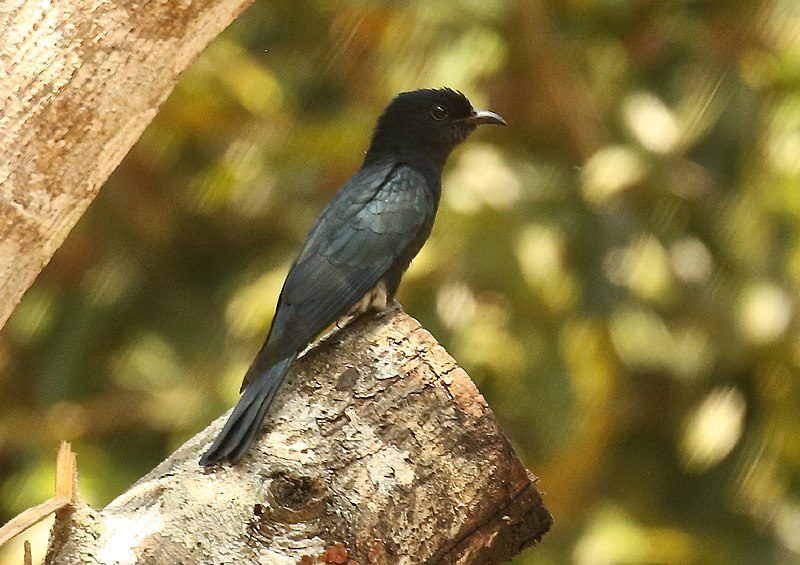
4. The Temminck’s stint (Calidris temminckii) is a small migratory wading bird named after Dutch naturalist Coenraad Jacob Temminck. They breed in summer bog lands of far northern Russia and fly down to the tropics of Southern Asia every winter, where they eat insects in freshwater mud lands.
Bird song recording HERE
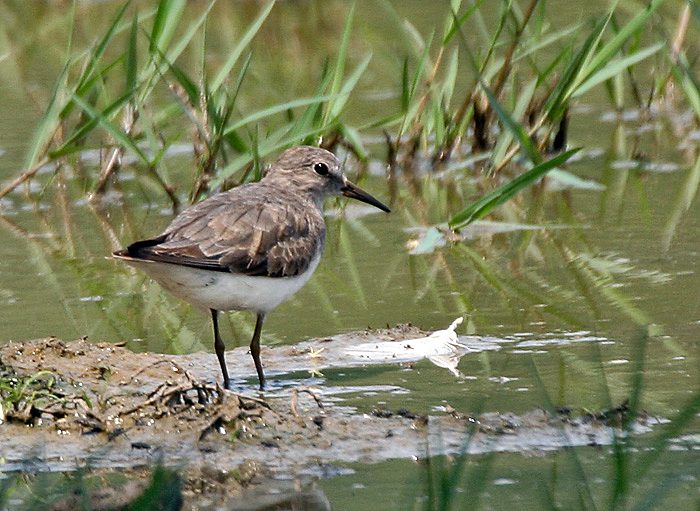
5. The small pratincole, little pratincole, or small Indian pratincole (Glareola lactea), is a common bird is found from western Pakistan across India, Myanmar, Thailand and Cambodia. This species is only 16.5-18.5 cm in length, with a 42–48 cm wingspan. Because of its small size, the small pratincole can be briefly confused in flight with swifts or swallows.
The most unusual feature of the pratincoles is that although classed as waders they typically hunt their insect prey on the wing like swallows, although they can also feed on the ground.
The small pratincole is a species of open country, and is often seen near water in the evening, hawking for insects.
Bird song HERE
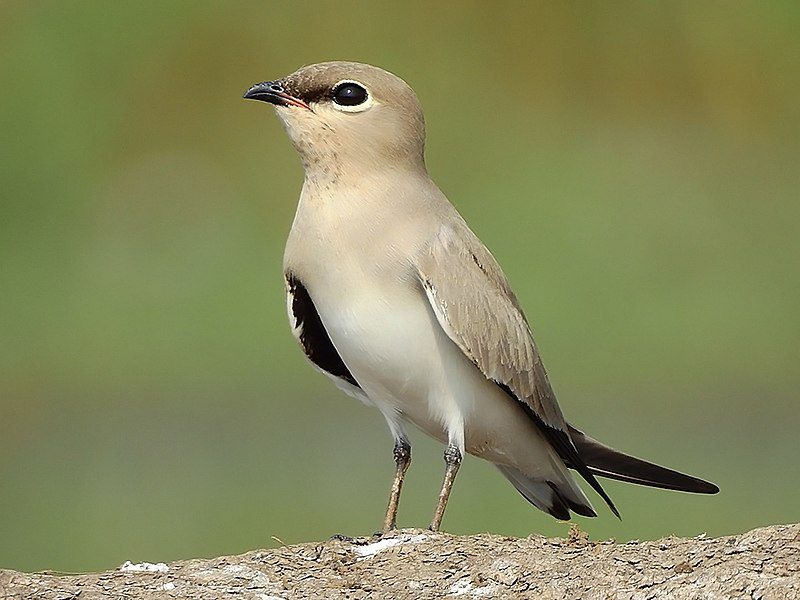
6. Jerdon’s baza (Aviceda jerdoni) is a moderate sized brown hawk with a thin white-tipped black crest usually held erect. It is found across South-east Asia, and inhabits the north, east and western areas of Cambodia
The common name and Latin binomial commemorate the surgeon-naturalist Thomas C. Jerdon.
Bird song HERE
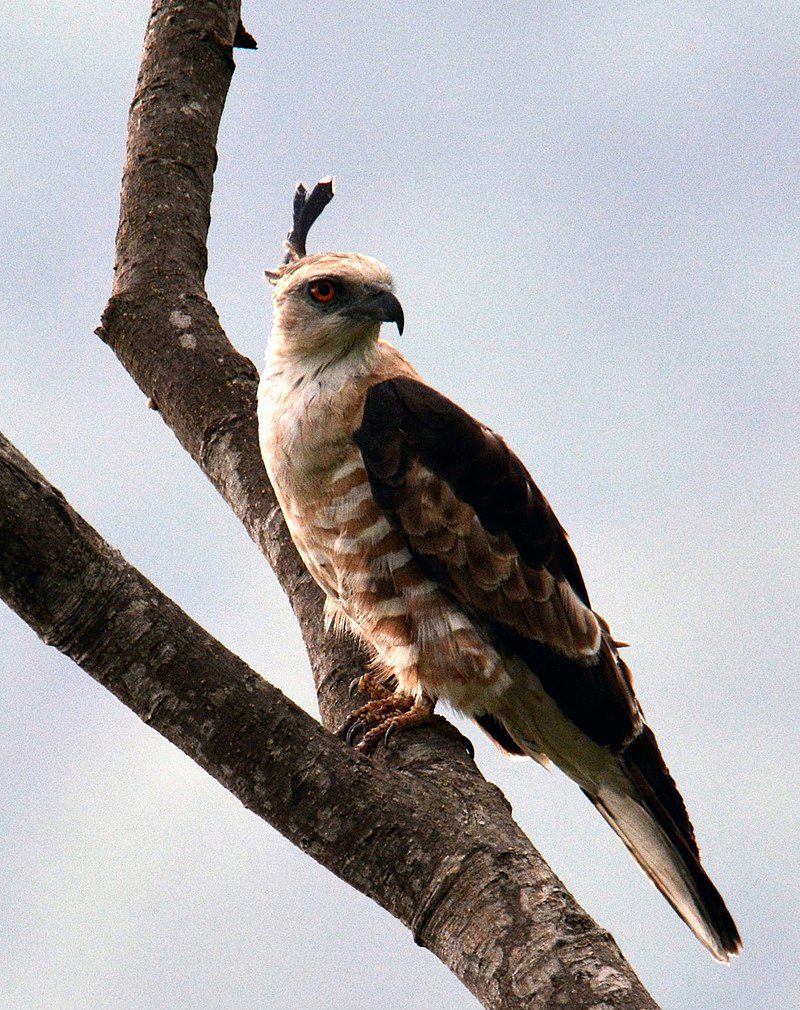
7. The spot-bellied eagle-owl (Bubo nipalensis) not only has a cool name, but quite possibly the most awesome looking eyebrows in the avian kingdom. This large bird of prey is a forest-inhabiting species found in the Indian Subcontinent and Southeast Asia.
The spot-bellied eagle-owl is nocturnal and often spends its day hidden in the dense foliage of large forest trees. However, they have been observed on the move and even hunting during the day, especially in forests with minimal human disturbance. Their activity normally picks up at dusk as they begin to hunt.
As well as the usual owl diet of rodents, these eagle owls reportedly hunt larger game birds such as pheasant, jungle fowl and peafowl, which are often much heavier than it (they top the scales at 1.5 to 2.5 kg).
The owl has a distinctive call, which is also quite scary.
Bird Screech HERE

8. The buffy fish owl (Ketupa ketupu), also known as the Malay fish owl (boring, buffy is much better-like the vampire slayer), is a native to Southeast Asia and lives foremost in tropical forests and wetlands. It also is sometimes found in plantations, and rural and urban gardens. During the daytime, it shelters often singly in densely foliaged trees
They are vocal blighters, and recorded calls include hissing sounds and a rattling kutook, repeated rapidly about seven times. Also recorded has been a ringing, loud pof-pof-pof and a high, hawk-like hie-e-e-e-e-keek series of notes. The buffy fish owl is rather noisy before breeding, and pairs may engage in bouts of duetting for several minutes at a time.
Mostly, as the name suggests, feeding on fish, the owl also eats reptiles, insects, rodents and carrion.
Bird screeches HERE

Who doesn’t love to twitch over a pair of great tits bobbing about?
9. The cinereous tit (Parus cinereus) which was once thought as subspecies of the great tit (Parus major). The updated great tit in the new sense is distinguishable by the greenish-back and yellowish underside. The distribution of this species extends from parts of West Asia across South Asia and into Southeast Asia.
These birds are usually seen in pairs or small groups that sometimes join mixed-species foraging flocks. They forage mainly by gleaning, capturing insects (mainly caterpillars, bugs and beetles) that are disturbed and will also feed on buds and fruits.
Hear a whistling tit HERE

10. A bird name that could easily describe a British Etonian MP, the pin-striped tit-babbler (Mixornis gularis), is common from east India across Southeast Asia. The species has a distinctive yellowish supercilium and rufous crown. The throat is yellowish with brown streaks. Call is a loud repeated chonk-chonk-chonk-chonk-chonk. Listen to it HERE

11. The vernal hanging parrot (Loriculus vernalis) is a small parrot found across Cambodia – and definitely in Kep. It moves about following the availability of local fruit, seeds, buds and blossoms that make up its diet. They frequent the banyan tree for the fruit and banana trees for the nectar from the flowers.
The small hanging parrot is only 14 cm long with a short tail. The adult male has a red rump and bill, and blue throat patch. The female has a green patch. It nests in holes in trees, laying 2-4 white eggs. Less chatty than other related species, it is found usually in small groups outside the breeding season.
The call of the parrot can be heard HERE
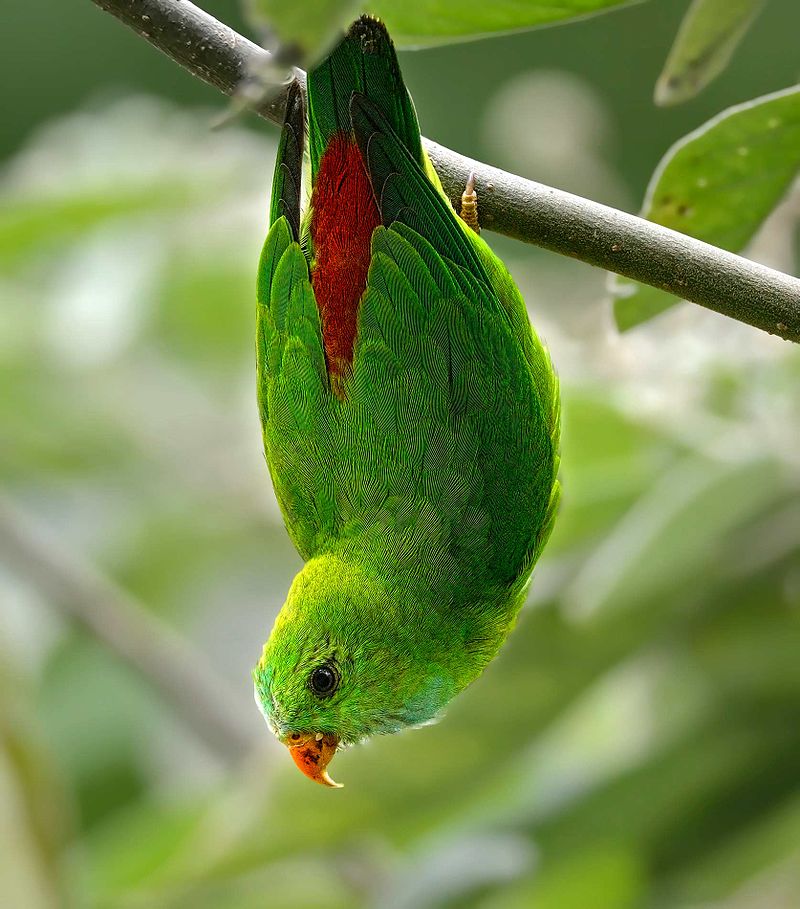
12. The knob-billed duck (Sarkidiornis melanotos), or African comb duck, is a duck found in tropical wetlands in Sub-Saharan Africa, the Indian Subcontinent from northern India to Laos, Southeast Asia and extreme southern China.
It is one of the largest species of duck, with a length of 56 to 76 cm, a wingspan of 116 to 145 cm and weight from 1.03 to 2.9 kg.
They feed on vegetation by grazing or dabbling and to a lesser extent on small fish, invertebrates, and seeds. They can cause problems for rice farmers across their huge range. Knob-billed ducks often perch in trees and are typically seen in flocks in wetland areas, small in the wet season, larger in the dry season.
Duck quack HERE
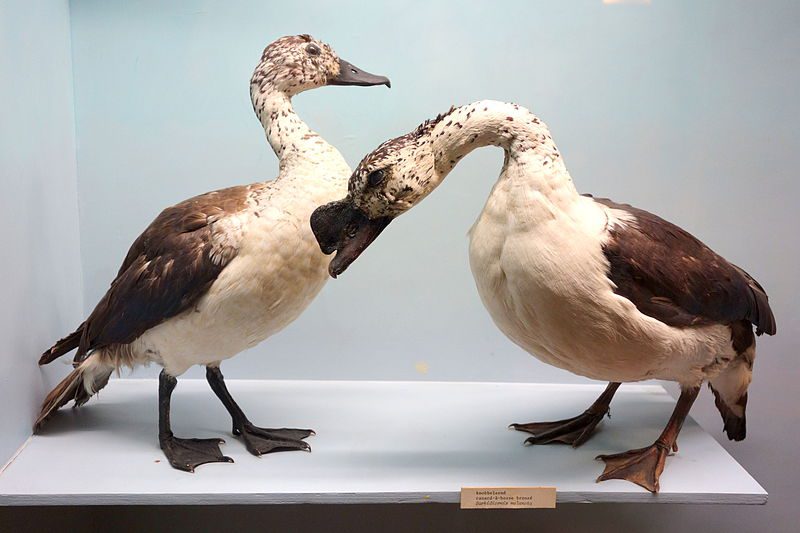
Read more:
Critters I- The Furries
Critters II- Bat Country
Critters III- Cats
Critters IV- Bearcat
Critters V- Hog Badger
Critters VI- The Serow
